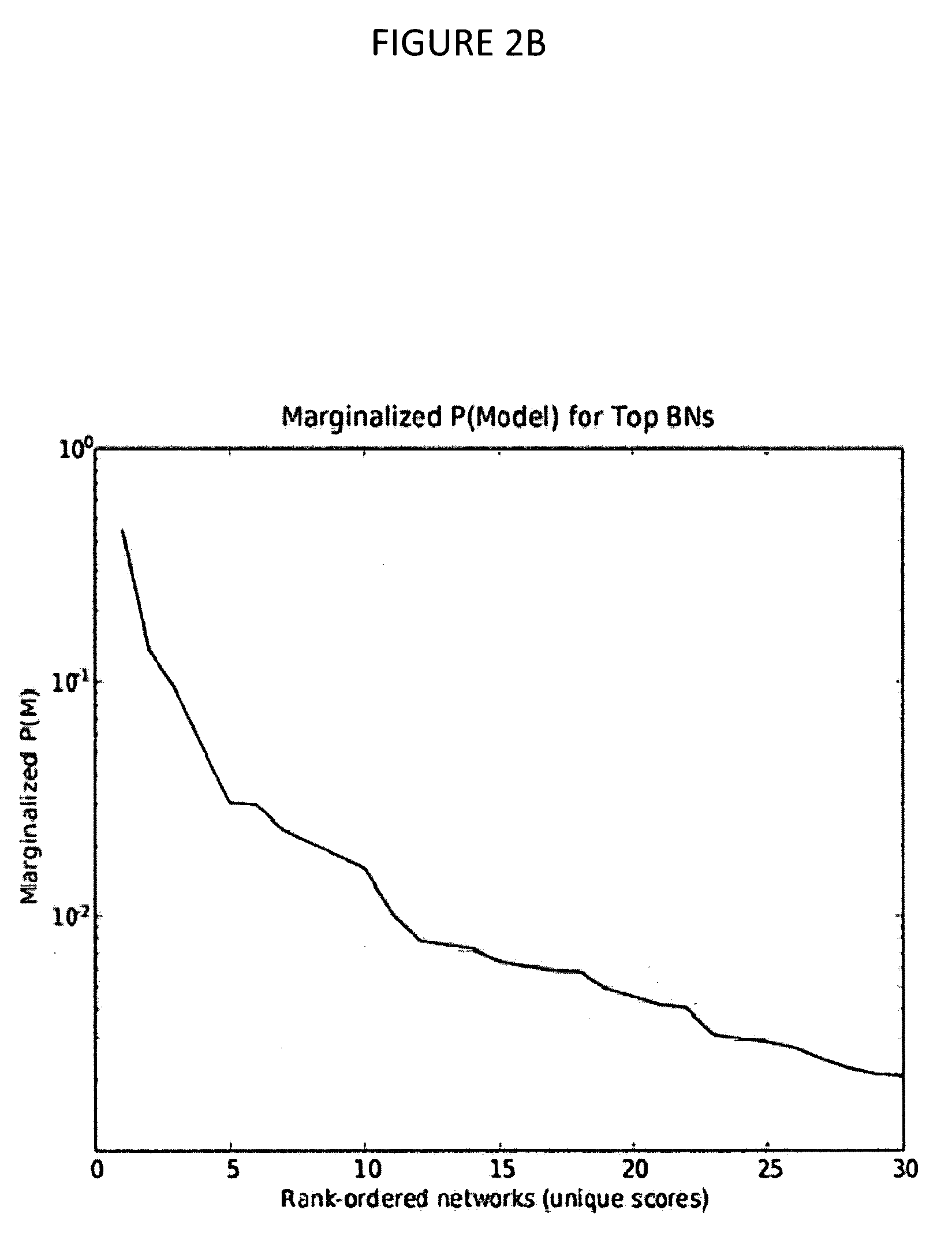Methods and systems for identifying molecular pathway elements
a molecular pathway and molecular pathway technology, applied in the field of methods and systems for identifying molecular pathway elements, can solve the problems of merging gene expression data, integrating these data, and describing gene expression and pathway models cellular behaviors
- Summary
- Abstract
- Description
- Claims
- Application Information
AI Technical Summary
Benefits of technology
Problems solved by technology
Method used
Image
Examples
example 1
MARIMBA System Architecture and Data Flow
[0037]In this example, MARIMBA is implemented using a three-tiered architecture built on two Dell Poweredge 2580 servers that run the Redhat Linux operating system and can be found at http: / / helab.bioinformatics.med.umich.edu / marimba / index.php. MARIMBA relies on the power of the BANJO (Bayesian Network Inference with Java Objects) system developed by Alex J. Hartemink at Duke University for Bayesian analysis (FIG. 8).
[0038]Users submit analysis requests and database queries through the web. These queries are then processed using PHP, Perl, Python, JavaScript, and SQL (middle-tier, application server based on Apache) against a MySQL (version 5.0) relational database (backend, database server). The result of each query is presented to the user in the web browser. An exemplary data pipeline for MARIMBA is shown in FIG. 1. A user can upload microarray / proteomics data or use public NCBI GEO data by simply typing a GEO dataset (GDS) ID. For example...
example 2
Processing of AfCS B Cell Microarray Data
[0040]The details of the Alliance for Cell Signaling (AfCS) B cell microarray experiment were reported previously (Lee, 2006; Zhu, 2004) and available from the AfCS website. Briefly, B cells purified from splenic preparations from 6- to 8-wk-old male C57BL / 6 mice were treated in triplicates or quadruplicates with medium alone, or one or two of 32 different ligands for 0.5, 1, 2, and 4 h (AfCS protocol-PP00000016). RNA was extracted following standard AfCS protocol PP000009. An Agilent cDNA microarray chip that contains 15,494 cDNA probes printed on 15,832 spots was used. It represents 10,615 unique MGI gene matches (Lee, 2006). Each Agilent array was hybridized with Cy5-labeled cDNA prepared from splenic B cell RNA and Cy3-labeled cDNA prepared from RNA of total splenocytes used as an internal reference (AfCS protocol-PP00000019). The arrays were scanned using Agilent Scanner G2505A, and images were processed using the Agilent G2566AA Feature...
example 3
Gene Selection Based on KEGG BCR Pathway
[0042]Genes were selected from the KEGG B cell receptor signaling pathway (http: / / www.genome.jp / dbget-bin / www_bget?path:mmu04662) and converted to Agilent specific probe identities. Forty-two genes were identified using updated AfCS annotation data. KEGG identifiers per gene were acquired using a python SOAP query to the KEGG database. A unique database was constructed in MARIMBA to include AfCS annotations and automate gene selection and gene averaging when requested. KEGG gene symbols are matched in the MARIMBA MySQL database, and converted to respective Agilent probe identifiers. Users opt to either average or select highly-variable probes for representing a respective gene. Probe averaging / selection occur in a final write step. These identifiers were converted to gene symbol using a custom MySQL database loaded with Agilent identifiers.
PUM
 Login to View More
Login to View More Abstract
Description
Claims
Application Information
 Login to View More
Login to View More - R&D
- Intellectual Property
- Life Sciences
- Materials
- Tech Scout
- Unparalleled Data Quality
- Higher Quality Content
- 60% Fewer Hallucinations
Browse by: Latest US Patents, China's latest patents, Technical Efficacy Thesaurus, Application Domain, Technology Topic, Popular Technical Reports.
© 2025 PatSnap. All rights reserved.Legal|Privacy policy|Modern Slavery Act Transparency Statement|Sitemap|About US| Contact US: help@patsnap.com



